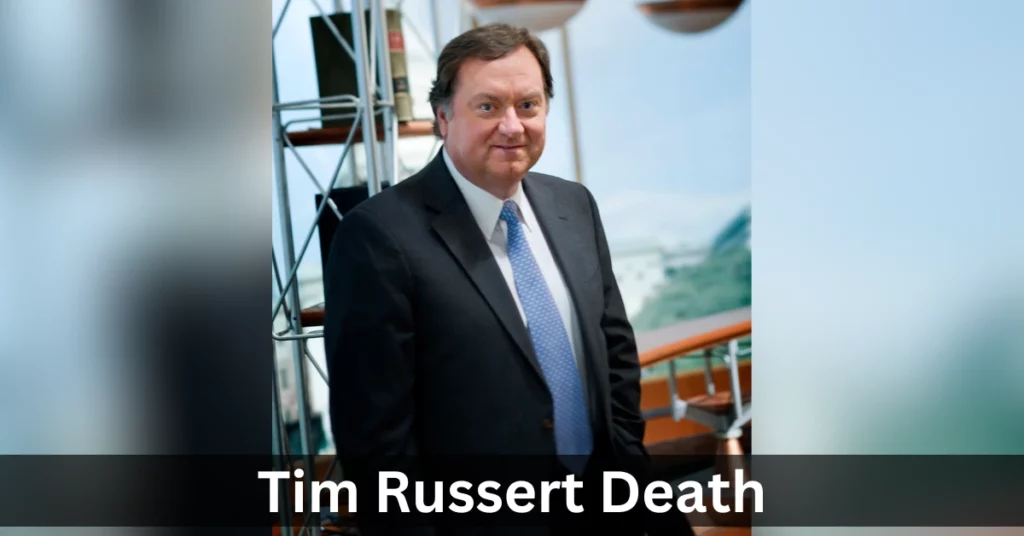What Happened To Tim Russert?
Russert suffered a sudden cardiac arrest and passed away as a result.
His left anterior descending coronary artery, a significant blood vessel that carries blood to the heart, experienced a plaque rupture. Plaque, in its simplest form, is a buildup of fat, cholesterol, and other substances on the artery wall, frequently under its lining.
Plaque ruptures cause blood to clot around them because the body perceives them as injuries.
According to Dr. Scott Monrad, head of the cardiac catheterization lab at the Montefiore-Einstein Heart Center in New York City, clotting around burst plaque can be extremely dangerous.
Russert suffered a heart attαck, or the destruction of heart muscle tissue, when a blood clot clogged an artery, cutting off blood flow to his heart. Even worse, the incident messed up the electrical impulses in his heart, causing it to lose rhythm.
15% of all heart attαcks involve this. Impulses might become erratic (ventricular fibrillation) or too rapid (ventricular tachycardia).
Why Did Russert Have His Heart Attαck Just Then, And Why Did It K!ll Him?
What Was Russert’s Condition Before His Heart Attαck?
His doctors had diagnosed him with asymptomatic coronary artery disease, meaning he had some plaque buildup in his coronary arteries but was otherwise in good health. This is commonplace.
More than half of the men who d!e from coronary artery disease don’t have any symptoms. Legato adds that minor symptoms like breathing difficulties or discomfort in the shoulders, back, or neck may exist but go unnoticed.
Or events that may indicate symptoms don’t happen. One of Legato’s patients never experienced breathing difficulties since she never exercised. (Russert received much.)
The autopsy revealed an enlarged heart; some versions claim Russert had diabetes. There is no evidence that his doctors were aware of this earlier.
How Can Coronary Artery Disease Be Monitored?
According to his internist, Russert had a stress test on April 29 and the findings were “normal.” There are multiple tests, so it’s unclear which one this was.
Remembering Tim Russert who died on this date June 13 in 2008. Photo by Josh Hallett. #OTD pic.twitter.com/doaFfWDDuX
— Dr. Jeffrey Guterman (@JeffreyGuterman) June 13, 2023
Standard treadmill tests monitor heart rate, respiration, blood pressure, and electrical activity to assess how well the heart pumps blood during exercise.
These tests can identify plaque-clogged arteries, but only if the blockage is significant enough—typically 70% or more—to be detected.
Accordingly, more minor blockages may occasionally be more harmful than bigger ones because neither of these tests or symptoms will reveal them, according to UCLA clinical professor Dr. Jignesh Patel.
Thallium stress tests use the radioactive element thallium to monitor blood flow to the heart muscle while working out. Sound waves are used in stress echocardiograms to capture moving images of the heart during and after exercise.
Basic echocardiograms, or stress echocardiograms without activity, CT angiograms, which produce detailed images of the coronary arteries, and coronary calcium scoring, which employs CT scanning to assess calcium buildup in the coronary arteries, are some further monitoring procedures.
(These are related to the chance of obstruction.) At least one coronary calcium test was allegedly performed on Russert in 1998. His 210 score indicates “moderate” coronary artery disease.
When His Heart Attαck Occurred, What Treatment Did Russert Receive?
These are some posts related to celebrities that are similar to this one, You can find related articles to this below:
Could More Have Been Done?
According to Dr. Paul Wang, Stanford University’s chief of cardiac arrhythmia, defibrillation offered the best chance to save his life. But every minute after a cardiac arrest, the likelihood of survival drops by around 10%.
Automated external defibrillators, which are portable and child-friendly, have recently been installed in a variety of public locations. Such defibrillators were used on 14 persons at Chicago’s O’Hare airport in their first ten months, reviving nine.
Overall, these devices have a 50% success rate when cardiac arrests are seen and are easily accessible. But they are unable to do miracles.
“I don’t know if the studio [at NBC] had one,” Patel stated, “but it sounds like it wouldn’t have made that much difference with the type of blockage Russert had.” Legato agrees: “I think he had a pretty horrible event,” she says. “Even if his doctor had been there, I’m not sure at all he could have been saved.”
If Russert had had an implantable defibrillator, according to Wang, which would have monitored his heart rate and rhythm and shocked his heart immediately if it detected arrhythmia, he could have had a chance.
The success rate of the gadgets is greater than 99%. Wang claims that if doctors had been informed of Russert’s enlarged heart, “he might have been a candidate” for one.
Cardiac arrest is distinct from many chronic and crippling medical conditions, according to Wang: After being revived, a person can carry on with their everyday life.
He continues, “We couldn’t make it happen this time,” but he sees Russert’s passing as a chance to increase public awareness. He wanted everyone to be aware of the reality. He wished to improve our nation. And this tragedy could become something extremely significant, saving other families from going through this.
Contents

